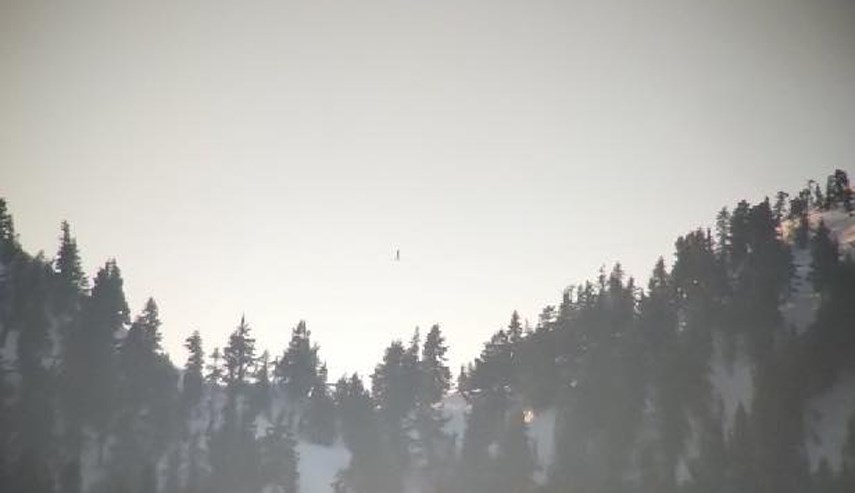North Shore Rescue is warning the slackline community to keep their hobby out of local airspace.
Slacklining, which is a bit like tightrope walking, involves anchoring straps to trees and ratcheting them until they are taut enough to walk across.
North Shore Rescue team leader Mike Danks was aghast when a member of the public alerted them to a massive slackline spanning a gap on Mount Strachan, Thursday evening.
More than being a potentially dangerous hobby in the team’s turf, the lines could also be a deathtrap for anyone flying in that area – including North Shore Rescue.
“It's scary for us. I don't know how else to put it. It is a frightening thing and I don't think people understand the gravity of the situation,” he said. “If we came in contact with that line, it could be catastrophic and someone could get killed.”
Danks and several other members of the team had spent most of the day Thursday training in Talon Helicopters’ new aircraft, practising with their new hoist used to get rescuers in and injured hikers out of the backcountry.
Danks said he will be taking the matter up with BC Parks, which owns the land, local aviation companies, and NAV Canada, the agency that operates Canada's civil air navigation system.
This is not the first incidence of a slackline posing a threat to the team in the North Shore Mountains. There was another recent case of one on Mount Seymour.
“Where they're setting these up are in areas that we're flying in all the time. And we're flying low,” he said. “Whether we're conducting a search or doing a fixed line operation or hoist operation."
As word spread about the potentially deadly slackline Friday morning, Danks said one of the people who installed the strap on Strachan called him.
“They're taking it down,” he said. “He's sorry that it happened the way it did. I think they're looking for a way to continue to do this. … I get that people want to do it. But there's got to be a better approach,” said Danks, exasperated. “For me, it's really simple. It’s our safety first.”
In a statement, the Ministry of Environment and Climate Change Strategy, which has jurisdiction over BC Parks, said staff will visit the area to "assess what type of signage is needed to deter this type of use in the future."



